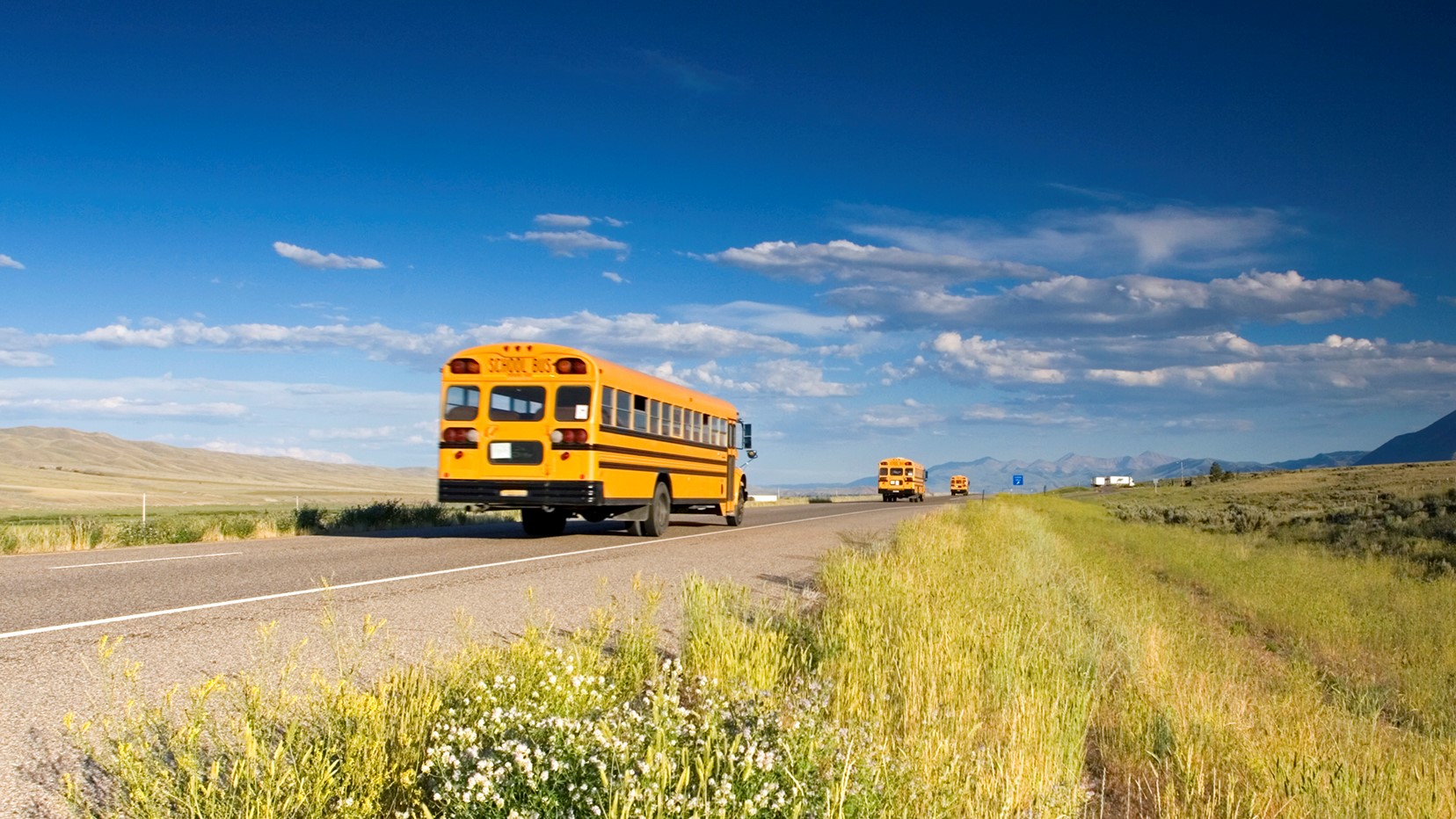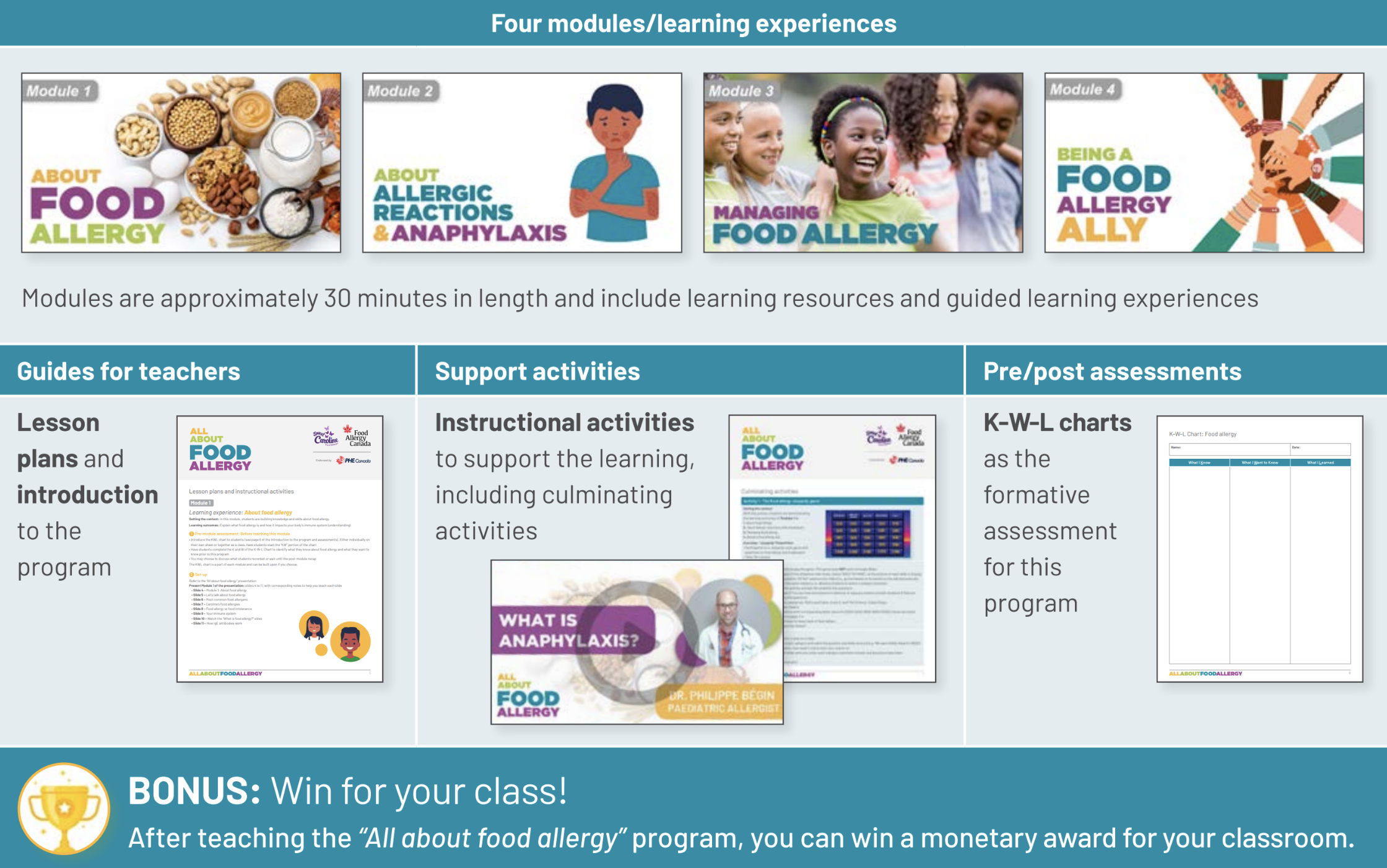This page contains resources, information and links for schools. Educators, allergists, and training professionals have collaborated with us in the development of these resources to make them as informative and beneficial to educators.
- The new All About Food Allergy Program is a free, medically-reviewed and curriculum-linked program for grades 4-6.
- Register now
School policies
Your school should develop an allergy management policy that works to ensure student safety. The following strategies should be considered as a part of the school’s overall allergy management policy:
1. Identification of at-risk students
Create an Anaphylaxis Emergency Plan for each student with allergies. An Anaphylaxis Emergency Plan is a written plan that is customized to each student with allergies. It lists the individual’s allergies, gives instructions on how to treat symptoms and provides directions on what to do in the event of an allergic reaction. In some provinces and territories, the plan is mandatory. Download a sample anaphylaxis emergency plan.
2. Training and education
Set up regular training for staff about prevention of reactions, the signs and symptoms of anaphylaxis, and emergency protocols.
Consider our AllergyAware.ca free online training course for educators: Anaphylaxis in schools: What educators need to know. Developed by Food Allergy Canada and Leap Learning Technologies Inc., the course is interactive and mobile-friendly. It takes approximately 30 minutes to complete, and upon successful completion, you can download your very own personalized certificate of completion.
3. Avoidance strategies
The following are recommended to reduce the risk of exposure for people with food allergy:
- Establish cleaning protocols for classrooms and school common areas to reduce the risk of exposure to allergens.
- Implement hand-washing protocols where students wash hands after every meal to help prevent cross-contamination.
- Have teachers – or other adults (lunch monitors) supervise younger children during snacks and other meals, not students.
- Have the students follow a “no food sharing” policy.
4. Communication
Develop a communication protocol with strategies to educate and raise awareness of food allergies with parents, students, employees, and volunteers.
Download a few of our posters and other resources to post around the classroom. Including the Think FAST poster and more.
5. Stock epinephrine
The following are practical considerations for on-site stock epinephrine, auto-injectors (e.g. EpiPen®) which are not prescribed for a specific person and can be used in an emergency.
- Who will be trained to use the devices?
- Where will the auto-injectors be located? They should be accessible and stored away from extreme cold and heat.
- How many devices and which doses (i.e., 0.15 mg or 0.3 mg) will you have on hand?
- What is the procedure for ensuring that stock epinephrine devices are in-date and that they are replaced before the expiry date?
Important: Someone with food allergy should always carry their epinephrine auto-injectors, when age appropriate. Stock epinephrine does not replace the need for them to do so.
Classroom tips
 Reading labels: Classroom and kitchen safety
Reading labels: Classroom and kitchen safetyIn all school settings, it is very important to understand how to read labels for allergens, and how to keep the classroom and kitchen safe by preventing cross-contamination. Many reactions are prevented by proper kitchen and food serving protocols. Find out more about reading labels, kitchen safety and avoiding cross-contamination.
 Events and field trips
Events and field tripsIt is helpful to provide recommendations for teachers and staff on how to make birthday parties and other school events safe for students with allergies. When students are in new situations, they can be at greater risk for a reaction because their normal routine is changed. School trips and special events are not part of the daily routine and may present new risks.
 School buses and other transit
School buses and other transitTo help keep buses safer, school administrators can speak with the transit company to find out if their drivers and staff have received emergency training in anaphylaxis management. You can respond to any knowledge gaps by arranging training. Many schools also have a “no eating” policy on school buses to help minimize risk.
Take advantage of two important free programs for students in elementary school (4-6) and high school (9-12) that are both fun and educational.
The elementary program called “All about food allergy” provides curriculum-linked and medically-reviewed programming which includes lesson plans, activities, presentations and more!
The high school program provides games and competitions for students to lead.
Use our free resources to educate and drive awareness of food allergy. You can download our Think FAST poster, 5 emergency steps to treat anaphylaxis, food allergy do’s and don’ts, and more!
Have your school host an allergy-friendly food drive. Your school can raise awareness about food allergy and help families in your community at the same time.
It’s a great way to get the students involved and learn how to read food labels and increase their empathy and support for their peers with food allergy.


